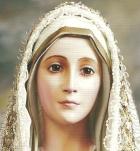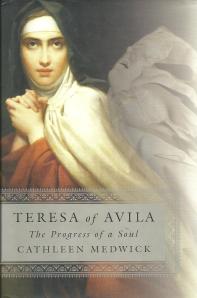 Great beings often walk among us without notice. Occasionally, their brief lives flash through our world, casting an arc of intense light into the darkest shadows. John F. Kennedy and Thomas Merton were such men.
Great beings often walk among us without notice. Occasionally, their brief lives flash through our world, casting an arc of intense light into the darkest shadows. John F. Kennedy and Thomas Merton were such men.
The great tasks of magnanimous men — to establish with truth, justice, charity, and liberty, new methods of relationships in human society — the task of bringing about true peace in the order established by God. We publicly praise such men and earnestly invite them to persevere in their work with ever greater zeal. It is an imperative of duty; it is a requirement of love. — Pope John XXIII
As we approach the fiftieth anniversary of John F. Kennedy’s assassination (November 22, 1963) one outstanding question appears even more relevant than ever: Was John Kennedy the victim of a plot hatched within one of America’s government agencies? And if so, what are the further implications? James Douglass provides some answers in JFK and the UNSPEAKABLE: Why He Died and Why It Matters.
Along with a detective’s eye for the trail of evidence and a journalist’s passion for a gripping tale, Douglass walks us through Kennedy’s progression from Cold Warrior to Peace Visionary. He brings a unique and powerful focus to his work by combining Kennedy’s pilgrimage with that of Thomas Merton. James Douglass is well suited for this indomitable task. In 1962-64, he was studying theology in Rome and lobbying at the Second Vatican Conference where he met Norman Cousins, who played the role of a secret messenger between Kennedy and Khrushchev. JFK and the Unspeakable is an indispensable book as we reflect on Kennedy’s legacy.
John F. Kennedy was no saint. Nor was he any apostle of nonviolence. However, as we are all called to do, he was turning. TESHUVAH, ‘turning’, the rabbinic word for repentance, is the explanation for Kennedy’s short-lived, contradictory journey toward peace. He was turning from what would have been the worst violence in history toward a new, more powerful peaceful possibility in his and our lives. He was therefore in deadly conflict with THE UNSPEAKABLE, a term Thomas Merton coined at the heart of the sixties after JFK’s assassination–in the midst of the escalating Vietnam War, the nuclear arms race, and the further assassinations of Malcolm X, Martin Luther King, and Robert Kennedy. In each of those soul-shaking events Merton sensed an evil whose depth and deceit seemed to go beyond the capacity of words to describe. . . JFK’s assassination is rooted in our denial of our nation’s crimes in World War II that began the Cold War and the nuclear arms race . . . By avoiding our responsibility for the escalating crimes of our state done for our security, we who failed to confront The Unspeakable opened the door to JFK’s assassination and its cover-up. — JFK and the Unspeakable
History has provided us with overwhelming evidence that Lee Harvey Oswald was an unwitting pawn in a larger conspiracy. We are ever more aware of the remarkable tally of persons with knowledge of the events in Dallas who died within several years of the assassination. Mark Lane’s LAST WORD: My Indictment of the CIA in the Murder of JFK and Richard Belzer’s HIT LIST: An In-Depth Investigation of the Mysterious Deaths of Witnesses to the JFK Assassination lay out many disturbing details.
Immediately after President Kennedy’s assasination, three eyewitnesses saw two men — neither of which resembled Lee Harvey Oswald — kill Dallas police officer J. D. Tippit. It turned out that none of those witnesses were called before the Warren Commission. In addition, before the assassination, George de Mohrenchildt, who was a known associate of the CIA, procured a job for Oswald in Dallas after Oswald returned from Russia as a presumed traitor. Mohrenchildt was found dead in 1977 from a gunshot the day before he was scheduled to testify before Congress about events involving the Kennedy assassination. During the same period in 1977, six FBI officials with connections to the case died; three from heart attacks, one from an accidental fall, and one from a ‘long illness’. The sixth, William C. Sullivan, former head of Domestic Intelligence for the FBI, was shot by a high-powered rifle close to his New Hampshire home. Sullivan was scheduled to give his testimony to Congress the following week.
Another mysterious death was that of Dorothy Kilgallen, a syndicated news reporter and regular on the TV show, What’s My Line. She was the only reporter who interviewed Jack Ruby after he killed Lee Harvey Oswald. Kilgallen was obsessed with proving there had been a coverup in the Kennedy case and was writing a book on the assassination. In 1965, after telling friends she was close to revealing the truth, Kilgallen was found dead in her Manhattan apartment from a mixture of barbiturates and alcohol. Conveniently, her notes were never found. She had even given back-up notes to her friend, Florence Smith, who died one day after Kilgallen. Once again, those notes also disappeared. The list goes on and on.
We have no evidence as to who in the military-industrial complex may have given the order to assassinate President Kennedy. That the order was carried out by the Central Intelligence Agency is obvious. The CIA’s fingerprints are all over the crime and the events leading to it. — JFK and the Unspeakable
The Bay of Pigs fiasco led a disgusted John Kennedy to fire Allen Dulles as head of the CIA. Ironically, Lyndon Johnson later appointed Dulles to head the Warren Commission investigation into Kennedy’s murder. From Our Lady of Gethsemani Trappist monastery in Kentucky, Merton followed the events. He wrote in his journal on November 30, 1963: The South has apparently accepted Kennedy’s death with great satisfaction and absolutely no charity. On the contrary, some have openly regretted that Bobby was not killed . . . The question of murder, the motives, etc. is still extremely unsatisfactory, and though everyone believes the ‘evidence’ discovered by the Dallas police, perhaps it is not as solid as it sounds. . . . The whole thing is grim, mysterious and much graver than people seem to believe, though God knows everyone was shocked. Our feds wanted a solution at any price and have taken the first one they could get. — Dancing in the Waters of Life
After the Cuban Missile Crisis, Merton began sending out copies of “The Cold War Letters” to friends as a means to side step Catholic censors with his views. “In actual fact it would seem that during the Cold War, if not during World War II, this country has become frankly a warfare state built on affluence, a power structure in which the interests of big business, the obsessions of the military, and the phobias of political extremists both dominate and dictate our national policy. It also seems that the people of the country are by and large reduced to passivity, confusion, resentment, frustration, thoughtlessness and ignorance, so that they blindly follow any line that is unraveled for them by the mass media . . . President Kennedy is a shrewd and sometimes adventurous leader. He means well and has the highest motives, and he is without doubt, in a position sometimes so impossible as to be absurd.” Merton also wrote his friend W. H. Ferry, “What is needed is really not shrewdness or craft, but what the politicians don’t have: depth, humanity, and a certain totality of self forgetfulness and compassion, not just for individuals but for man as a whole: a deeper kind of dedication. Maybe, Kennedy will break through into that someday by miracle. But such people are before long marked out for assassination.”
John F. Kennedy, by many accounts, broke through into that extraordinary space where leaders exhibit greatness. In 1962, Kennedy became involved in the negotiations between the United Steelworkers Union and the United States Steel Company. Determined to fight inflation by keeping the price of steel down, Kennedy brokered a deal whereby the union accepted modest raises with the understanding that U.S. Steel would not raise prices. Immediately upon completion of the deal, Roger Blough, chaiman of the company, announced a price increase of 3.5 percent. John Kennedy was furious and ordered his brother, Robert Kennedy, to begin an immediate anti-trust investigation by the Justice Department. JFK issued a statement: “Some time ago I asked each American to consider what he could do for his country, and I asked the steel companies. In the last 24 hours, we had their answer.”
During his time in office, Kennedy was confronted with the same disparity between corporate wealth and public interest that we see today. Indeed, in the last fifty years, we have received the same response from America’s corporate community as Kennedy did — one of continuous disdain for the nation’s welfare and common good. If only our current president, Barak Obama, had some of Kennedy’s spine we may not be confronting such stupendous lack of justice. Obama’s tepid reaction to the greatest financial fraud in the history of the world has been not only disgraceful but mind-boggling. His promises for a more transparent government and fairness to the middle class have turned out for naught. In addition, he clearly used the support of unions to get elected and then disregarded that support, as did the Democratic Party at-large, by taxing union health care plans to pay for Obamacare.
Compare our monastery and the General Electric plant in Louisville. Which one is the more serious and more ‘religious’ institution? One might be tempted to say ‘the monastery’ out of sheer habit. But, in fact, the religious seriousness of the monastery is like sandlot baseball compared with the big-league seriousness of General Electric. It may in fact occur to many, including the monks, to doubt the monastery and what it represents. Who doubts G.E.? — Thomas Merton
 In the winter of 1964-65 Merton made expeditions into the woods around the hermitage to take pictures of the stark but intricate crisscrossing patterns of the branches and twigs against the the sky on a dull day. On another dull day he wondered if he hadn’t wasted far too much film on a jagged stump twisted on its side, which he photographed from every angle, fascinated with the thorn like forms that seemed to jut out with arrested violence from the central core. One such ‘thorn’ pattern appears on the cover of the book of essays he was putting together at the hermitage, Raids on the Unspeakable. It provides a subtle link between seen image and literary subject. The Seven Mountains of Thomas Merton by Michael Mott.
In the winter of 1964-65 Merton made expeditions into the woods around the hermitage to take pictures of the stark but intricate crisscrossing patterns of the branches and twigs against the the sky on a dull day. On another dull day he wondered if he hadn’t wasted far too much film on a jagged stump twisted on its side, which he photographed from every angle, fascinated with the thorn like forms that seemed to jut out with arrested violence from the central core. One such ‘thorn’ pattern appears on the cover of the book of essays he was putting together at the hermitage, Raids on the Unspeakable. It provides a subtle link between seen image and literary subject. The Seven Mountains of Thomas Merton by Michael Mott.
Deeply affected by Hannah Arendt’s coverage of the Adolf Eichmann trial in Jerusalem for The New Yorker magazine, Merton conceived one of his most powerful works — A Devout Meditation in Memory of Adolf Eichmann appears in RAIDS ON THE UNSPEAKABLE. One of the most disturbing facts that came out in the Eichmann trial was that a psychiatrist examined him and pronounced him perfectly sane . . . We equate sanity with a sense of justice, with humaneness, with prudence, with the capacity to love and understand other people. We rely on the sane people of the world to preserve it from barbarism, madness, destruction. And now it begins to dawn on us that it is precisely the sane ones who are most dangerous. It is the sane ones, the well-adapted ones who can without qualms and without nausea aim the missiles and press the buttons that will initiate the great festival of destruction that they, the sane ones, have prepared. . . . We can no longer assume that because a man is ‘sane’ he is therefore in his ‘right’ mind. The whole concept of sanity in a society where spiritual values have lost their meaning is itself meaningless . . . Torture is nothing new, is it? We ought to be able to rationalize a little brainwashing and genocide . . . Even Christians can shake off their sentimental prejudices about charity, and become sane like Eichmann . . . On the other hand, you will find the pacifists and the ban-the-bomb people are, quite seriously, just as we read in TIME, a little crazy. — Thomas Merton
As Merton indicates, we cannot leave it to our national leaders — the “sane ones” — to lead us out of the ever spiraling cycle of violence the world finds itself in. They, in fact, are crazy. It is up to the “odd balls” and those not willing to accept the so-called sanity of experts to stand as one and say No More.
Forgetfulness leads to exile while remembrance is the secret of redemption. — Baal Shem Tov.
How could this happen? Who did it? And why? These are eternal questions pivotal to Merton’s thoughts on Adolf Eichmamn. In April of 1939, a prison official at the Sachsenhausen concentration camp was given the task of establishing a new camp in Oświęcim, Poland. Rudolf Höss made Auschwitz into the most efficient and notorious killing field in history. By 1944, over one million persons were killed, mostly by toxic gas fumes.Thomas Harding tells the story with memorable clarity in
HANNS AND RUDOLF: The True Story of the German Jew Who Tracked Down and Caught The Kommandant of Auschwitz.
War and the profits to be made from it were recurring themes for Thomas Merton. He wrote Ethel Kennedy, Bobby’s wife, in 1961,”There is no getting around the fact that the making and testing of nuclear weapons is profitable and indeed in some sense vital to many people in this country. Hence these people, however sincere may be their motives, tend to be prejudiced in favor of everything that endangers the peace of the world. They may not want war but they live by defense industries and they want weapons. And to want weapons as badly as they do is, I am afraid, tantamount to wanting war. That is how wars are made . . . I therefore hope and trust that every precaution will be taken to prolong the ban on nuclear testing as long as possible.”

We may never know if John Kennedy, a Catholic, read this letter. Thurston Clarke addresses the issue in his wonderful new book, JFK”s LAST HUNDRED DAYS: The Transformation of a Man and the Emergence of A Great President. “Glenn Seaborg, who headed the Atomic Energy Commission and met with Kennedy often that summer [1963], thought he felt more passionately about it than any other measure sponsored by his administration, and called his determination to halt atmospheric testing and the spread of nuclear weapons ‘like a religion’ to him.
The nuclear threat John Kennedy and Thomas Merton so feared remains with us today. Eric Schlosser’s new book Command and Control offers a blunt assessment of the dangers involved. His chilling recount of the military’s nuclear program revolves around an incident that began on September 18, 1980 when an Air Force technician dropped a socket wrench inside a Titan Missile silo near Damascus, Arkansas. This, however, is only the tip of an Abbot and Costello parade of near misses involving nuclear weapons that the military has been concealing for sixty years. These “sane” individuals can no longer be trusted with mankind’s survival. Another Fukushima catastrophe awaits if we don’t stop them.
We now know that JFK was reaching out to Khrushchev and Castro and intended to begin withdrawing from Vietnam after the 1964 election. Instead, the American weapons manufacturers and the generals who buy their products embarked on a fifty year orgasm of failed ventures in Vietnam, Afghanistan and Iraq. Countless lives and trillions of dollars later, they continue pumping our U.S citizens into a frenzy with relentless second amendment charades. If wars abroad should slack off, well, we can have an endless one here at home against each other. Still, the neocons show no shame or remorse for their assault on Christian morality and human dignity. They continue to profit from war and weapon sales. Their indecencies will not stop until we publish their names and faces and not allow them to hide in the board rooms and executives suites of the world’s arms merchants.
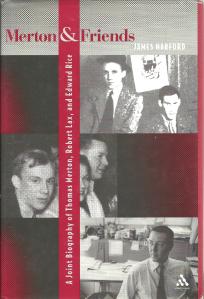 Friendship and faith were the twin elements in Merton’s life. For a fuller appreciation, read MERTON & FRIENDS: A Joint Biography of Thomas Merton, Robert Lax, and Edward Rice by James Harford. Merton attended Columbia University in New York City in the late 1930’s. His friend Robert Lax went on to be a world renowned poet and lived most of his life on the island of Patmos in the Aegean Sea where the Apostle John wrote the Book of Revelation. Edward Rice was an author and photographer who edited the Catholic magazine Jubilee from 1953 to 1967. The name stems from Jubilate Deo (Praise God). With regular contributions from Lax and Merton Jubilee must have been a wonderful read. It explains why Rice’s biography of Merton, The Man in the Sycamore Tree, was so well written. The title comes from an unpublished novel of Merton’s he wrote in their hippie period in Olean, New York. Jubilee struggled throughout its existence with money. As much as it strangled Merton, the Church sought to stifle the fresh voices rising from the magazine.
Friendship and faith were the twin elements in Merton’s life. For a fuller appreciation, read MERTON & FRIENDS: A Joint Biography of Thomas Merton, Robert Lax, and Edward Rice by James Harford. Merton attended Columbia University in New York City in the late 1930’s. His friend Robert Lax went on to be a world renowned poet and lived most of his life on the island of Patmos in the Aegean Sea where the Apostle John wrote the Book of Revelation. Edward Rice was an author and photographer who edited the Catholic magazine Jubilee from 1953 to 1967. The name stems from Jubilate Deo (Praise God). With regular contributions from Lax and Merton Jubilee must have been a wonderful read. It explains why Rice’s biography of Merton, The Man in the Sycamore Tree, was so well written. The title comes from an unpublished novel of Merton’s he wrote in their hippie period in Olean, New York. Jubilee struggled throughout its existence with money. As much as it strangled Merton, the Church sought to stifle the fresh voices rising from the magazine.
Jubilee: A Magazine of the Church and Her People deeply affected its many readers. Lax and Merton made contributions to the publication throughout its existence. Padre Pio, Thích Nhất Hạnh and Maria Montessori were first introduced in its pages. One Albanian nun, later to be known as Mother Teresa, made Jubilee’s office her first stop when she came to America. That the New York diocese discouraged wealthy Catholics from supporting a fresh inspiring voice was a sign of a larger problem. Frank discussions of lapsed Catholics, birth control, and Asian religions angered Church officials.
Catholics who remember what a powerful impact JUBILEE magazine had on those itching for change in the pre-Vatican II 1950s — lay and religious alike — are tempted to believe it was no less than a twentieth century intervention by the Holy Spirit. — James Harford
Fifty years on, its hard to believe that in 1960 the Father General of the Trappist order forbade Merton to write D.T. Suzuki, a Zen Master, citing communicato cum infidele, communication with the infidel. Merton, of course, continued and his correspondence became legion, then legendary. In 1961, he wrote Rabbi Zalman Schachter-Shalomi, “I wish I knew more about doing teshuva. It is the only thing that seems to make sense these days. And in the political dark, I light a small, frail light about peace and hold it up in the whirlwinds.”
James Carroll, author of CONSTANTINE”S SWORD: The Church and The Jews stated, “Merton, as much as anyone, put us on this road to change, and he remains our steady companion in this unfinished journey. I did not know this in 1961, of course, but Merton was already well along this road, even before I knew that it lay ahead of us. While I was reading his 1948 masterpiece, a monument to a world that had not changed in 700 years, he was using the word, teshuva — already a sign of change he had undergone and a sign that he saw change was necessary, while I was still enthralled with American virtue and American power. I stood moved to tears in the presence of John Kennedy at his Inauguration vowing with him to go anywhere, fight any foe . . . Thomas Merton, at that point, had already written to Ernesto Cardenal — the date is November 20, 1961 — ‘Pray for us. We are starting an American peace movement. It will be very difficult. We are, alas, very late.” Merton & Judaism
 “Merton’s fierce social consciousness and conscience will not let us move from the Jesus tradition of nonviolence . . . Merton disturbs us and has been disturbing us since he began writing in a number of arenas. One arena is his social criticism, his unrelenting commitment to the nonviolence of Jesus. . . . within the Christian tradition, we have made our agreement or compromises with what we call reality. Merton didn’t go there . . . he stayed very much on the side of this prophetic witness of Jesus and the early gospel tradition . . . if we do a reading of his writings on nonviolence, on war, on poverty, on racism, on injustice, his writings are as relevant and contemporary today as when he was writing in the 1950s and 1960s. His writings have an uncanny relevance, a disquieting, uncomfortable relevance.” Kathleen Deignan from the film SOUL SEARCHING: The Journey of Thomas Merton.
“Merton’s fierce social consciousness and conscience will not let us move from the Jesus tradition of nonviolence . . . Merton disturbs us and has been disturbing us since he began writing in a number of arenas. One arena is his social criticism, his unrelenting commitment to the nonviolence of Jesus. . . . within the Christian tradition, we have made our agreement or compromises with what we call reality. Merton didn’t go there . . . he stayed very much on the side of this prophetic witness of Jesus and the early gospel tradition . . . if we do a reading of his writings on nonviolence, on war, on poverty, on racism, on injustice, his writings are as relevant and contemporary today as when he was writing in the 1950s and 1960s. His writings have an uncanny relevance, a disquieting, uncomfortable relevance.” Kathleen Deignan from the film SOUL SEARCHING: The Journey of Thomas Merton.
 The Spirit of God speaks to the faithful in between the lines of divine revelation, telling us things that are not evident to the inspection of scholarship or reason — Thomas Merton.
The Spirit of God speaks to the faithful in between the lines of divine revelation, telling us things that are not evident to the inspection of scholarship or reason — Thomas Merton.
The seeds of contemplation Merton planted in the spiritual heart of the world must be continuously nourished. “Merton’s mystical theology mines the space between the revealed word and silence.” — SOPHIA: The Hidden Christ of Thomas Merton
Merton did walk with joy. he walked explosively, bang bang bang. as though fireworks, small and they too, joyful, went off every time his heel hit the ground . . . that was true when he was in college, and it was true when he was just out of college, and it was true the last time I saw him bang bang bang banging down the long hallway of the monastery. he walked with joy, bounced with joy,: knew where he was going. Robert Lax
On December 10, 1968, twenty-seven years to the day he entered Our Lady of Gethsemani Monastery in Kentucky, Thomas Merton died, electrocuted by a fan after taking a shower. He was in Bagkok, Thailand for a conference sponsored by the Benedictine organization Aid for Implementing Monasticism. Before his death he met with many Buddhist luminaries including the Dalai Lama, 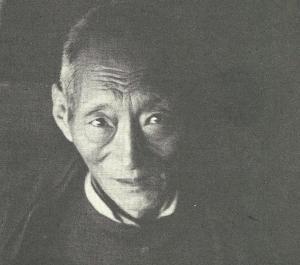 Chogyam Trungpa, and Chatral Rinpoche. He said of Kalu Rinpoche, “He is a small, thin man with a strange concavity at the temples as if his skull had been pressed in by huge thumbs. Soft-spoken like all of them, he keeps fingering his rosary, and patiently answered my many questions on the hermit retreat . . . At first he was evasive about it and talked of Mahayana in general until he was apparently satisfied and said I had the “true Mahayana spirit.” Then he went on in more detail.” Merton & Buddhism
Chogyam Trungpa, and Chatral Rinpoche. He said of Kalu Rinpoche, “He is a small, thin man with a strange concavity at the temples as if his skull had been pressed in by huge thumbs. Soft-spoken like all of them, he keeps fingering his rosary, and patiently answered my many questions on the hermit retreat . . . At first he was evasive about it and talked of Mahayana in general until he was apparently satisfied and said I had the “true Mahayana spirit.” Then he went on in more detail.” Merton & Buddhism
 This photo, from The Man in the Sycamore Tree by Edward Rice shows Merton “at the height of his powers. He was deep in his Buddhist studies, and the monastery had become a background for his work rather than the subject Less than three years later he was dead.”
This photo, from The Man in the Sycamore Tree by Edward Rice shows Merton “at the height of his powers. He was deep in his Buddhist studies, and the monastery had become a background for his work rather than the subject Less than three years later he was dead.”
Merton concluded his talk (Marxism and Monastic Perspectives) the morning of his death with these remarks. “It is the view that if you once penetrate by detachment and purity of heart to the inner secret of the ground of your ordinary experience, you attain to a liberty that nobody can touch, that nobody can affect, that no political change of circumstances can do anything to . . . The essential thing for this, in the Buddhist tradition, is the formation of spiritual masters who can bring it out in the hearts of people who are as yet unformed. Wherever you have somebody capable of giving some kind of direction and instruction to a small group attempting to do this thing, attempting to love and serve God and reach union with him, you are bound to have some kind of monasticism. . . It represents an instinct of the human heart, and it represents a charism given by God to man. It cannot be rooted out, because it does not depend on man. . . I will conclude on that note. I believe the plan is to have all the questions for this morning’s lectures this evening at the panel. So I will disappear from view and we can all have a Coke or something. Thank you so very much. . .
Several hours later, Thomas Merton was found dead on a terrazzo floor with an electric fan still running on his chest. The priest who pushed it away received a small shock. Reflecting upon Merton’s passing, it is impossible not to recall the final line of The Seven Storey Mountain:
That you may become the brother of God and learn to know the Christ of the burnt men.
 This was the first time that I had been struck by such a feeling of spirituality in anyone who professed Christianity . . . It was Merton who introduced me to the real meaning of the word ‘Christian’. — Dalai Lama
This was the first time that I had been struck by such a feeling of spirituality in anyone who professed Christianity . . . It was Merton who introduced me to the real meaning of the word ‘Christian’. — Dalai Lama
 Christ is always calling ― do we listen? He said faith even as small as a mustard seed could move mountains. To initiate this faith, we need to first till the field. We can do that by recognizing the suffering of others and honoring the other in ourselves.
Christ is always calling ― do we listen? He said faith even as small as a mustard seed could move mountains. To initiate this faith, we need to first till the field. We can do that by recognizing the suffering of others and honoring the other in ourselves. being outspoken on issues of peace and non-violence, his observations made him a contemporary spokesman on key matters that are still driving communities apart today: race, income inequality, and a decline in moral and religious values. In addition, Merton strongly supported interfaith understanding and pioneered dialogue with prominent spiritual leaders of various faiths. Although he followed a Christian path, Merton’s writings on Hinduism, Judaism, Buddhism, Confucianism, and later Islam, are profound since he believed that all religious traditions are a search for ultimate truth. After meeting Merton in 1968 the Dalai Lama said, “This was the first time that I had been struck by such a feeling of spirituality in anyone who professed Christianity . . . It was Merton who introduced me to the real meaning of the word Christian.” (Photo used by permission of the Merton Legacy Trust and the Thomas Merton Center, Bellarmine University)
being outspoken on issues of peace and non-violence, his observations made him a contemporary spokesman on key matters that are still driving communities apart today: race, income inequality, and a decline in moral and religious values. In addition, Merton strongly supported interfaith understanding and pioneered dialogue with prominent spiritual leaders of various faiths. Although he followed a Christian path, Merton’s writings on Hinduism, Judaism, Buddhism, Confucianism, and later Islam, are profound since he believed that all religious traditions are a search for ultimate truth. After meeting Merton in 1968 the Dalai Lama said, “This was the first time that I had been struck by such a feeling of spirituality in anyone who professed Christianity . . . It was Merton who introduced me to the real meaning of the word Christian.” (Photo used by permission of the Merton Legacy Trust and the Thomas Merton Center, Bellarmine University) Merton’s ability to reach above and beyond what is normally viewed as Christian is what makes him such an outstanding teacher. Merton said, “The Spirit of God speaks to the faithful in between the lines of divine revelation, telling us things that are not evident to the inspection of scholarship or reason.” But he knew how to communicate those subtle “in between the lines” truths in a timeless manner. The seeds of contemplation Merton planted in the spiritual heart of the world continuously yields new fruit. One book on Thomas Merton’s writings which gives great insight into his thoughts on Christ is Christopher Pramuk’s, SOPHIA: The Hidden Christ of Thomas Merton. Brother Patrick Hart, Merton’s last secretary, called it “the best book ever written about Thomas Merton.” SOPHIA provides an in-depth view of Merton’s understanding of the intuitive wisdom tradition.
Merton’s ability to reach above and beyond what is normally viewed as Christian is what makes him such an outstanding teacher. Merton said, “The Spirit of God speaks to the faithful in between the lines of divine revelation, telling us things that are not evident to the inspection of scholarship or reason.” But he knew how to communicate those subtle “in between the lines” truths in a timeless manner. The seeds of contemplation Merton planted in the spiritual heart of the world continuously yields new fruit. One book on Thomas Merton’s writings which gives great insight into his thoughts on Christ is Christopher Pramuk’s, SOPHIA: The Hidden Christ of Thomas Merton. Brother Patrick Hart, Merton’s last secretary, called it “the best book ever written about Thomas Merton.” SOPHIA provides an in-depth view of Merton’s understanding of the intuitive wisdom tradition.

 cross. In his new book noted Anglican theologian
cross. In his new book noted Anglican theologian  You live in illusion and in the appearance of things. There is a reality. You are the reality. If you wake up to that reality, you will know that you are nothing, and being nothing, you are everything. That’s all. – Kalu Rinpoche
You live in illusion and in the appearance of things. There is a reality. You are the reality. If you wake up to that reality, you will know that you are nothing, and being nothing, you are everything. That’s all. – Kalu Rinpoche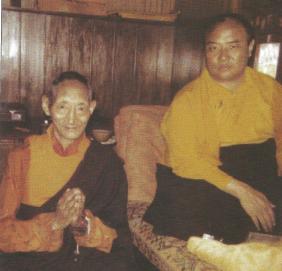 Having entered his three year retreat for lama training at age fifteen and then spending twelve years in solitary retreat in the Himalayan mountains of Kham, Eastern Tibet, Kalu Rinpoche was an authentic master in the Kagyu tradition that dates its origin to Tilopa one thousand years ago. Rinpoche (shown here with the Karmapa in 1973) introduced the traditional three year retreat method of Jamgon Kontrul in France and then New York and Canada. Kalu Rinpoche was one of the Tibetans Thomas Merton met with shortly before his death in 1968. Their conversation is discussed in
Having entered his three year retreat for lama training at age fifteen and then spending twelve years in solitary retreat in the Himalayan mountains of Kham, Eastern Tibet, Kalu Rinpoche was an authentic master in the Kagyu tradition that dates its origin to Tilopa one thousand years ago. Rinpoche (shown here with the Karmapa in 1973) introduced the traditional three year retreat method of Jamgon Kontrul in France and then New York and Canada. Kalu Rinpoche was one of the Tibetans Thomas Merton met with shortly before his death in 1968. Their conversation is discussed in  In 1983 Kalu Rinpoche, as head of the Shangpa Kagyu lineage, presided over the first Kagyu Monlam (Aspiration Prayers) celebration in Bodhgaya, India. This event, which lasted two weeks was attended by two hundred monks, nuns and lay people. The fifth monlam in 1987 lasted three weeks (shown here from left to right: Beru Khyentse Rinpoche, Situ Rinpoche, Kalu Rinpoche and Bokar Rinpoche). Many of the attendees were dedicated American lay students who also received three year retreat empowerments from Kalu Rinpoche. Lay practitioners are the the skeletal strength and backbone of any monastic system, these yogins are the ties which prevent the rails from coming apart. All structured religious systems combine appearance with illusion. The more hierarchical the more illusion, simple really, no choice. A yogi has no need of title or label.
In 1983 Kalu Rinpoche, as head of the Shangpa Kagyu lineage, presided over the first Kagyu Monlam (Aspiration Prayers) celebration in Bodhgaya, India. This event, which lasted two weeks was attended by two hundred monks, nuns and lay people. The fifth monlam in 1987 lasted three weeks (shown here from left to right: Beru Khyentse Rinpoche, Situ Rinpoche, Kalu Rinpoche and Bokar Rinpoche). Many of the attendees were dedicated American lay students who also received three year retreat empowerments from Kalu Rinpoche. Lay practitioners are the the skeletal strength and backbone of any monastic system, these yogins are the ties which prevent the rails from coming apart. All structured religious systems combine appearance with illusion. The more hierarchical the more illusion, simple really, no choice. A yogi has no need of title or label.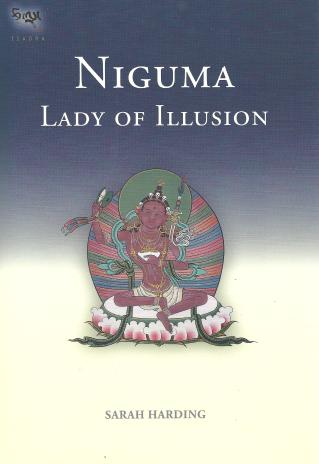 Actually Kalu Rinpoche’s esoteric roots were sunk in the eleventh century when a Tibetan adept named Khyungpo Naljor (Yogi of the Garuda Clan),
Actually Kalu Rinpoche’s esoteric roots were sunk in the eleventh century when a Tibetan adept named Khyungpo Naljor (Yogi of the Garuda Clan), 

 theologian, classical concert organist, pastor of St. Nicholas church and principal of St. Thomas College in Strasbourg, then in Germany. He was completing work on the book which would revolutionize contemporary views on Jesus,
theologian, classical concert organist, pastor of St. Nicholas church and principal of St. Thomas College in Strasbourg, then in Germany. He was completing work on the book which would revolutionize contemporary views on Jesus,  Schweitzer’s own words: I had assumed that familiarity with the sayings of Jesus would give a much better comprehension of what to popular logic is not rational. Several times, indeed, my appeal to the obedience that Jesus’ command of love requires under certain circumstances earned me an accusation of conceit. How I suffered to see so many people assuming the right to tear open the doors and shutters of my inner self!
Schweitzer’s own words: I had assumed that familiarity with the sayings of Jesus would give a much better comprehension of what to popular logic is not rational. Several times, indeed, my appeal to the obedience that Jesus’ command of love requires under certain circumstances earned me an accusation of conceit. How I suffered to see so many people assuming the right to tear open the doors and shutters of my inner self!
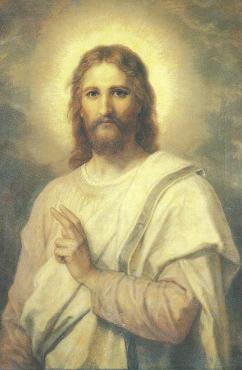
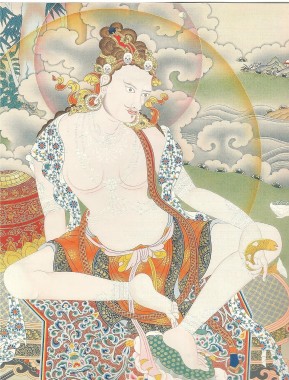




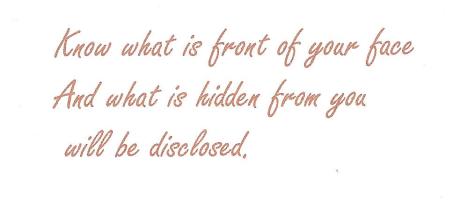

 Brace published Thomas Merton’s seminal autobiography
Brace published Thomas Merton’s seminal autobiography 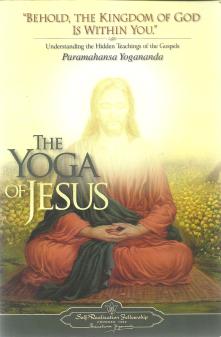
 No dark fate determines the future. We do. Each day and each moment, we are able to create and re-create our lives and the very quality of human life on our planet. This is the power we wield. Lasting happiness cannot be found in pursuit of any goal or achievement. It does not reside in fortune or fame. It reside only in the human mind and heart, and it is here we hope you will find it. Tenzin Gyatso/Desmond Tutu
No dark fate determines the future. We do. Each day and each moment, we are able to create and re-create our lives and the very quality of human life on our planet. This is the power we wield. Lasting happiness cannot be found in pursuit of any goal or achievement. It does not reside in fortune or fame. It reside only in the human mind and heart, and it is here we hope you will find it. Tenzin Gyatso/Desmond Tutu
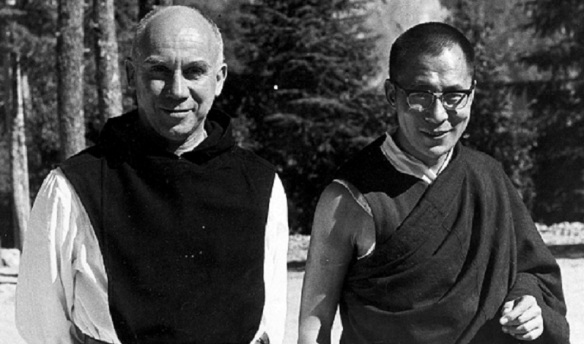

 Danny Thomas, determined to keep his vow by building a hospital for children, sought assistance from two quarters: Samuel Cardinal Stritch of Chicago (left) who had confirmed Danny many years earlier when he was Bishop of Toledo, and the Arabic speaking community of the United States.
Danny Thomas, determined to keep his vow by building a hospital for children, sought assistance from two quarters: Samuel Cardinal Stritch of Chicago (left) who had confirmed Danny many years earlier when he was Bishop of Toledo, and the Arabic speaking community of the United States.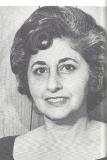 With the devoted assistance of LaVonne Rashid (left) and Michael Tamer
With the devoted assistance of LaVonne Rashid (left) and Michael Tamer  (right) Danny Thomas founded the American Lebanese Syrian Associated Charities on October 10, 1957 in Chicago. Since then ALSAC has raised more than $500 million annually of which 85% goes directly to St. Jude’s Hospital. According to Wikipedia, “Discoveries at St. Jude have completely changed how doctors treat children with cancer and other catastrophic illnesses. Since St. Jude was established, the survival rate for acute lymphoblastic leukemia, the most common type of childhood cancer, has
(right) Danny Thomas founded the American Lebanese Syrian Associated Charities on October 10, 1957 in Chicago. Since then ALSAC has raised more than $500 million annually of which 85% goes directly to St. Jude’s Hospital. According to Wikipedia, “Discoveries at St. Jude have completely changed how doctors treat children with cancer and other catastrophic illnesses. Since St. Jude was established, the survival rate for acute lymphoblastic leukemia, the most common type of childhood cancer, has  increased from 4 percent in 1962 to 94 percent today. During this time, the overall survival rate for childhood cancers has risen from 20 percent to 80 percent. St. Jude has treated children from across the United States and from more than 70 countries. Doctors across the world consult with St. Jude on their toughest cases. Also, St. Jude has an International Outreach Program to improve the survival rates of children with catastrophic illnesses worldwide through the transfer of knowledge, technology and organizational skills.” St. Jude’s Children’s Hospital was also the first fully integrated hospital in the south.
increased from 4 percent in 1962 to 94 percent today. During this time, the overall survival rate for childhood cancers has risen from 20 percent to 80 percent. St. Jude has treated children from across the United States and from more than 70 countries. Doctors across the world consult with St. Jude on their toughest cases. Also, St. Jude has an International Outreach Program to improve the survival rates of children with catastrophic illnesses worldwide through the transfer of knowledge, technology and organizational skills.” St. Jude’s Children’s Hospital was also the first fully integrated hospital in the south. On October 31st, 2016 Pope Francis will take part in a joint ceremony with the World Lutheran Federation in Lund, Sweden. This marks the 500th anniversary of Martin Luther’s attack on the Roman Church which launched the Protestant Reformation. The Pope released a statement, “I want to ask for mercy and forgiveness for the behavior of Catholics towards Christians of other churches which has not reflected gospel values.” Even for a man known for radical departures from traditional norms, this is a quantum leap which can only benefit us all. Martin Luther was a true prophet, his vision embarked many in the Christian community in a new direction. He saw clearly the dangers inherent in a strictly celibate priesthood and the blatant corruption involved with selling indulgences.
On October 31st, 2016 Pope Francis will take part in a joint ceremony with the World Lutheran Federation in Lund, Sweden. This marks the 500th anniversary of Martin Luther’s attack on the Roman Church which launched the Protestant Reformation. The Pope released a statement, “I want to ask for mercy and forgiveness for the behavior of Catholics towards Christians of other churches which has not reflected gospel values.” Even for a man known for radical departures from traditional norms, this is a quantum leap which can only benefit us all. Martin Luther was a true prophet, his vision embarked many in the Christian community in a new direction. He saw clearly the dangers inherent in a strictly celibate priesthood and the blatant corruption involved with selling indulgences.  In 1521 Martin Luther was hiding, under sentence of death, holed up in a tower room at Wartburg Castle which he referred to as “his Patmos.” It was in this room, for the next ten months, Martin Luther began his Bible translation, bringing a discordant collection of Latin versions into a coherent German comprehensible to the average man, albeit many of whom could not read. An English priest, William Tyndale, journeyed to Germany and met with Luther. Tyndale translated Luther’s Bible into English. Copies had to be smuggled into England, over 90% of the King James Bible derives from Tyndale’s translation. Luther’s Reformation led to a mass revolt of peasants in Germany and Austria against the societal constraints that left them in perpetual misery. Thousands of the revolutionaries were slaughtered and the leader, Thomas Müntzer beheaded. Martin Luther threw his support behind the ruling class.
In 1521 Martin Luther was hiding, under sentence of death, holed up in a tower room at Wartburg Castle which he referred to as “his Patmos.” It was in this room, for the next ten months, Martin Luther began his Bible translation, bringing a discordant collection of Latin versions into a coherent German comprehensible to the average man, albeit many of whom could not read. An English priest, William Tyndale, journeyed to Germany and met with Luther. Tyndale translated Luther’s Bible into English. Copies had to be smuggled into England, over 90% of the King James Bible derives from Tyndale’s translation. Luther’s Reformation led to a mass revolt of peasants in Germany and Austria against the societal constraints that left them in perpetual misery. Thousands of the revolutionaries were slaughtered and the leader, Thomas Müntzer beheaded. Martin Luther threw his support behind the ruling class. Pope from the America’s and the first Jesuit ever so honored. When he also, of his own choice, became the first Pontiff to take the name Francis the world was served notice that the Catholic community now had a leader fearless enough to face the Lords of Capitalism and call them by their rightful name – Shameful. In our insular American bubble television poses as culture and a ‘reality’ show host a politician. Growing up in Venezuela in the 1950’s the disparity of wealth between the haves and the poverty of the have-nots seared itself into my mind stream. What is tragic is now that disparity has become the norm in the United states. Like frogs in boiling water we have watched society morph into a Dickens tragedy without notice. Thank God, literally Thank God, Pope Francis notices. For a clear accounting of Bergolio’s route from chemical technician to priest-archbishop-cardinal and then Pontiff read Paul Vallely’s masterpeice,
Pope from the America’s and the first Jesuit ever so honored. When he also, of his own choice, became the first Pontiff to take the name Francis the world was served notice that the Catholic community now had a leader fearless enough to face the Lords of Capitalism and call them by their rightful name – Shameful. In our insular American bubble television poses as culture and a ‘reality’ show host a politician. Growing up in Venezuela in the 1950’s the disparity of wealth between the haves and the poverty of the have-nots seared itself into my mind stream. What is tragic is now that disparity has become the norm in the United states. Like frogs in boiling water we have watched society morph into a Dickens tragedy without notice. Thank God, literally Thank God, Pope Francis notices. For a clear accounting of Bergolio’s route from chemical technician to priest-archbishop-cardinal and then Pontiff read Paul Vallely’s masterpeice,  When God has told you what you ought to do, he has already told you what you can do. William Barclay lived his life based on the tenets of this quote from Walter Savage Landor. I am indebted to my good friend Reverend Alfred Twyman, Ministerial Program Coordinator for the New York State Department of Corrections, for introducing me to Barclay. Born in Wick, Scotland in 1907 by the time he died in 1978 William Barclay was one of the world’s most widely read and studied religious personalities. His New Testament Commentaries, The New Daily Study Bible, are exemplary in their combination of faith and scholasticism. Trained at the Church of Scotland’s Trinity College Barclay was solidly grounded in classical theology, versed in Hebrew, Greek and Latin. He understood, and fought for, the belief that we lose our spiritual umbilical cord when we toss aside the linguistic roots that led to our present beliefs. Likewise, there can be no true practice of Vajrayana Buddhism if we lose our facility with Sanskrit and Tibetan.
When God has told you what you ought to do, he has already told you what you can do. William Barclay lived his life based on the tenets of this quote from Walter Savage Landor. I am indebted to my good friend Reverend Alfred Twyman, Ministerial Program Coordinator for the New York State Department of Corrections, for introducing me to Barclay. Born in Wick, Scotland in 1907 by the time he died in 1978 William Barclay was one of the world’s most widely read and studied religious personalities. His New Testament Commentaries, The New Daily Study Bible, are exemplary in their combination of faith and scholasticism. Trained at the Church of Scotland’s Trinity College Barclay was solidly grounded in classical theology, versed in Hebrew, Greek and Latin. He understood, and fought for, the belief that we lose our spiritual umbilical cord when we toss aside the linguistic roots that led to our present beliefs. Likewise, there can be no true practice of Vajrayana Buddhism if we lose our facility with Sanskrit and Tibetan.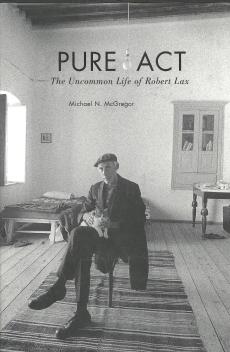 true expression in simplicity. Michael McGregor’s new biography,
true expression in simplicity. Michael McGregor’s new biography,  When the classic Franco Zeffirelli film
When the classic Franco Zeffirelli film
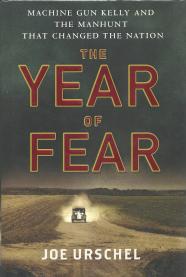 alues and heritage they will answer the jihadist call. Lest we think terrorism is a new phenomena in America, read Joe Urschel’s excellent study of America in the 1930’s,
alues and heritage they will answer the jihadist call. Lest we think terrorism is a new phenomena in America, read Joe Urschel’s excellent study of America in the 1930’s, 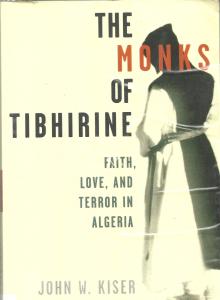
 Jesus speaks clearly to us, “
Jesus speaks clearly to us, “ Hidden Christ of Thomas Merton
Hidden Christ of Thomas Merton packages (and sells) as “reality,” is one of Merton’s most enduring gifts as a spiritual writer and mystical theologian.’ C. Pramuk
packages (and sells) as “reality,” is one of Merton’s most enduring gifts as a spiritual writer and mystical theologian.’ C. Pramuk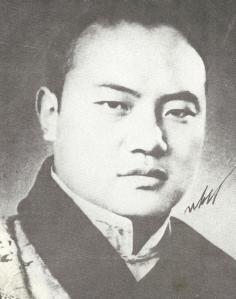
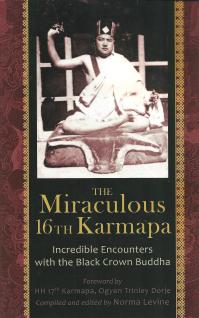


 Social Welfare Board. This took her to northern India where she established a school for Tibetan tulkus, Young Lama’s Home School. She took a particular interest in Trungpa and Akong, even inviting them to live in her home. (At left: Chögyam Trungpa, Freda Bedi, Karmapa, Baba Pyare Bedi (Freda’s husband) and Akong Rinpoche – Delhi 1961). It was her insistence that led Trungpa to Oxford to pursue his studies in classical Western philosophy.
Social Welfare Board. This took her to northern India where she established a school for Tibetan tulkus, Young Lama’s Home School. She took a particular interest in Trungpa and Akong, even inviting them to live in her home. (At left: Chögyam Trungpa, Freda Bedi, Karmapa, Baba Pyare Bedi (Freda’s husband) and Akong Rinpoche – Delhi 1961). It was her insistence that led Trungpa to Oxford to pursue his studies in classical Western philosophy.  Akong supported his friend by taking work as a janitor. In 1964 the Karmapa ordained her as a nun, she frequently served as his translator, including his first visit to the West in 1974. Gelongma Palmo was a central figure in Rangjung Rigpe Dorje’s mandala when she died in 1977. Vicki Mackenzie has written an excellent new (March 2017) biography,
Akong supported his friend by taking work as a janitor. In 1964 the Karmapa ordained her as a nun, she frequently served as his translator, including his first visit to the West in 1974. Gelongma Palmo was a central figure in Rangjung Rigpe Dorje’s mandala when she died in 1977. Vicki Mackenzie has written an excellent new (March 2017) biography, 
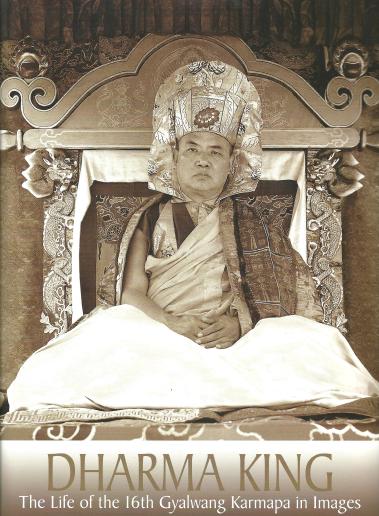






 Jamphel Drakpa, (left with Chögyam Trungpa) Akong Rinpoche’s brother, served as
Jamphel Drakpa, (left with Chögyam Trungpa) Akong Rinpoche’s brother, served as  private secretary for the Karmapa at Rumtek Monastery in Sikkim and then as the secretary and treasurer of Karma Triyana in Woodstock. He became a monk, named Yeshe Losal by Rangjung Rigpe Dorje, and did a five year retreat in a tiny cottage behind the main shrine building in Woodstock. He then became abbot of Samye Ling Monastery in Scotland. Below, Khenpo Karthar tugs on Lama Yeshe’s beard at the first Thrangu Tsedrup-Long Life Puja held at Karma Triyana in 2016. On this occasion Khenpo Karthar said, “I want to say how happy I am and how fortunate I feel that Lama Yeshe Losal was able to join us for this event. Lama Yeshe Losal is someone who was very much loved and trusted by the 16th Gyalwang Karmapa. And therefore when KTD was first established, the Karmapa placed him here as an assistant or deputy to Lama Tenzin Choyni. At that time he was instrumental in the very founding and proper functioning, creation and maintenance of Karma Triyana Dharmachakra.”
private secretary for the Karmapa at Rumtek Monastery in Sikkim and then as the secretary and treasurer of Karma Triyana in Woodstock. He became a monk, named Yeshe Losal by Rangjung Rigpe Dorje, and did a five year retreat in a tiny cottage behind the main shrine building in Woodstock. He then became abbot of Samye Ling Monastery in Scotland. Below, Khenpo Karthar tugs on Lama Yeshe’s beard at the first Thrangu Tsedrup-Long Life Puja held at Karma Triyana in 2016. On this occasion Khenpo Karthar said, “I want to say how happy I am and how fortunate I feel that Lama Yeshe Losal was able to join us for this event. Lama Yeshe Losal is someone who was very much loved and trusted by the 16th Gyalwang Karmapa. And therefore when KTD was first established, the Karmapa placed him here as an assistant or deputy to Lama Tenzin Choyni. At that time he was instrumental in the very founding and proper functioning, creation and maintenance of Karma Triyana Dharmachakra.”











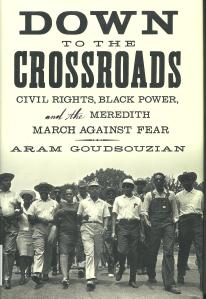






 In the winter of 1964-65 Merton made expeditions into the woods around the hermitage to take pictures of the stark but intricate crisscrossing patterns of the branches and twigs against the the sky on a dull day. On another dull day he wondered if he hadn’t wasted far too much film on a jagged stump twisted on its side, which he photographed from every angle, fascinated with the thorn like forms that seemed to jut out with arrested violence from the central core. One such ‘thorn’ pattern appears on the cover of the book of essays he was putting together at the hermitage, Raids on the Unspeakable. It provides a subtle link between seen image and literary subject. The Seven Mountains of Thomas Merton by Michael Mott.
In the winter of 1964-65 Merton made expeditions into the woods around the hermitage to take pictures of the stark but intricate crisscrossing patterns of the branches and twigs against the the sky on a dull day. On another dull day he wondered if he hadn’t wasted far too much film on a jagged stump twisted on its side, which he photographed from every angle, fascinated with the thorn like forms that seemed to jut out with arrested violence from the central core. One such ‘thorn’ pattern appears on the cover of the book of essays he was putting together at the hermitage, Raids on the Unspeakable. It provides a subtle link between seen image and literary subject. The Seven Mountains of Thomas Merton by Michael Mott.

 Friendship and faith were the twin elements in Merton’s life. For a fuller appreciation, read MERTON & FRIENDS: A Joint Biography of Thomas Merton, Robert Lax, and Edward Rice by James Harford. Merton attended Columbia University in New York City in the late 1930’s. His friend Robert Lax went on to be a world renowned poet and lived most of his life on the island of Patmos in the Aegean Sea where the Apostle John wrote the Book of Revelation. Edward Rice was an author and photographer who edited the Catholic magazine Jubilee from 1953 to 1967. The name stems from Jubilate Deo (Praise God). With regular contributions from Lax and Merton Jubilee must have been a wonderful read. It explains why Rice’s biography of Merton, The Man in the Sycamore Tree, was so well written. The title comes from an unpublished novel of Merton’s he wrote in their hippie period in Olean, New York. Jubilee struggled throughout its existence with money. As much as it strangled Merton, the Church sought to stifle the fresh voices rising from the magazine.
Friendship and faith were the twin elements in Merton’s life. For a fuller appreciation, read MERTON & FRIENDS: A Joint Biography of Thomas Merton, Robert Lax, and Edward Rice by James Harford. Merton attended Columbia University in New York City in the late 1930’s. His friend Robert Lax went on to be a world renowned poet and lived most of his life on the island of Patmos in the Aegean Sea where the Apostle John wrote the Book of Revelation. Edward Rice was an author and photographer who edited the Catholic magazine Jubilee from 1953 to 1967. The name stems from Jubilate Deo (Praise God). With regular contributions from Lax and Merton Jubilee must have been a wonderful read. It explains why Rice’s biography of Merton, The Man in the Sycamore Tree, was so well written. The title comes from an unpublished novel of Merton’s he wrote in their hippie period in Olean, New York. Jubilee struggled throughout its existence with money. As much as it strangled Merton, the Church sought to stifle the fresh voices rising from the magazine.



 This was the first time that I had been struck by such a feeling of spirituality in anyone who professed Christianity . . . It was Merton who introduced me to the real meaning of the word ‘Christian’. — Dalai Lama
This was the first time that I had been struck by such a feeling of spirituality in anyone who professed Christianity . . . It was Merton who introduced me to the real meaning of the word ‘Christian’. — Dalai Lama

